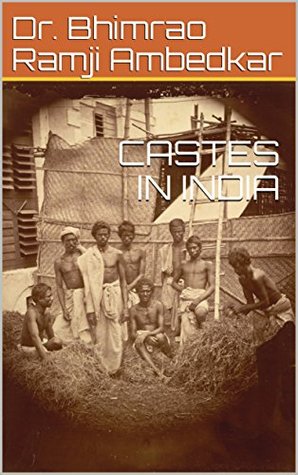More on this book
Community
Kindle Notes & Highlights
The study of the origin of caste must furnish us with an answer to the question—what is the class that raised this " enclosure " around itself ? The question may seem too inquisitorial, but it is pertinent, and an answer to this will serve us to elucidate the mystery of the growth and development of castes all over India-Unfortunately a direct answer to this question is not within my power. I can answer it only indirectly. I said just above that the customs in question were current in the Hindu society. To be true to facts it is necessary to qualify the statement, as it connotes universality
...more
their prevalence. These customs in all their strictness are obtainable only in one caste, namely the Brahmins, who occupy the highest place in the social hierarchy of the Hindu society ; and as their prevalence in non-Brahmin castes is derivative of their observance is neither strict nor complete. This important fact can serve as a basis of an important observation. If the prevalence of these customs in the non-Brahmin Castes is derivative, as can be shown very easily, then it needs no argument to prove what class is the father of the institution of caste. Why the Brahmin class should have
...more
We shall be well advised to recall at the outset that the Hindu society, in common with other societies, was composed of classes and the earliest known are the (1) Brahmins or the priestly class; (2) the Kshatriya, or the military class ; (3) the Vaishya, or the merchant class and (4) the Shudra, or the artisan and menial class. Particular attention has to be paid to the fact that this was essentially a class system, in which individuals, when qualified, could change their class, and therefore classes did change their personnel. At some time in the history of the Hindus, the priestly class
...more
This highlight has been truncated due to consecutive passage length restrictions.
This propensity to imitate has been made the subject of a scientific study by Gabriel Tarde, who lays down three laws of imitation. One of his three laws is that imitation flows from the higher to the lower or, to quote his own words, "Given the opportunity, a nobility will always and everywhere imitate its leaders, its kings or sovereigns, and the people likewise, given the opportunity, its nobility." [f.4][f.4] Another of Tarde's laws of imitation is : that the extent or intensity of imitation varies inversely in proportion to distance, or in his own words " The thing that is most imitated
...more
At this juncture I will turn back to support a former conclusion of mine, which might have appeared to you as too sudden or unsupported. I said that the Brahmin class first raised the structure of caste by the help of those three customs in question. My reason for that conclusion was that their existence in other classes was derivative. After what I have said regarding the role of imitation in the spread of these customs among the non-Brahmin castes, as means or as ideals, though the imitators have not been aware of it, they exist among them as derivatives ; and, if they are derived, there
...more
My study of the Caste problem involves four main points : ( 1 ) that in spite of the composite make-up of the Hindu population, there is a deep cultural unity; (2) that caste is a parcelling into bits of a larger cultural unit; (3) that there was one caste to start with and (4) that classes have become Castes through imitation and excommunication-peculiar interest attaches to the problem of Caste in India today; as persistent attempts are being made to do away with this unnatural institution.


